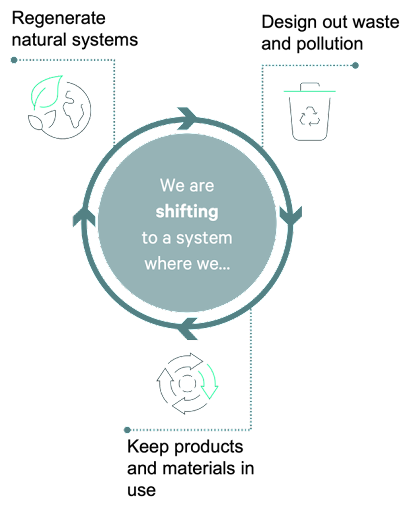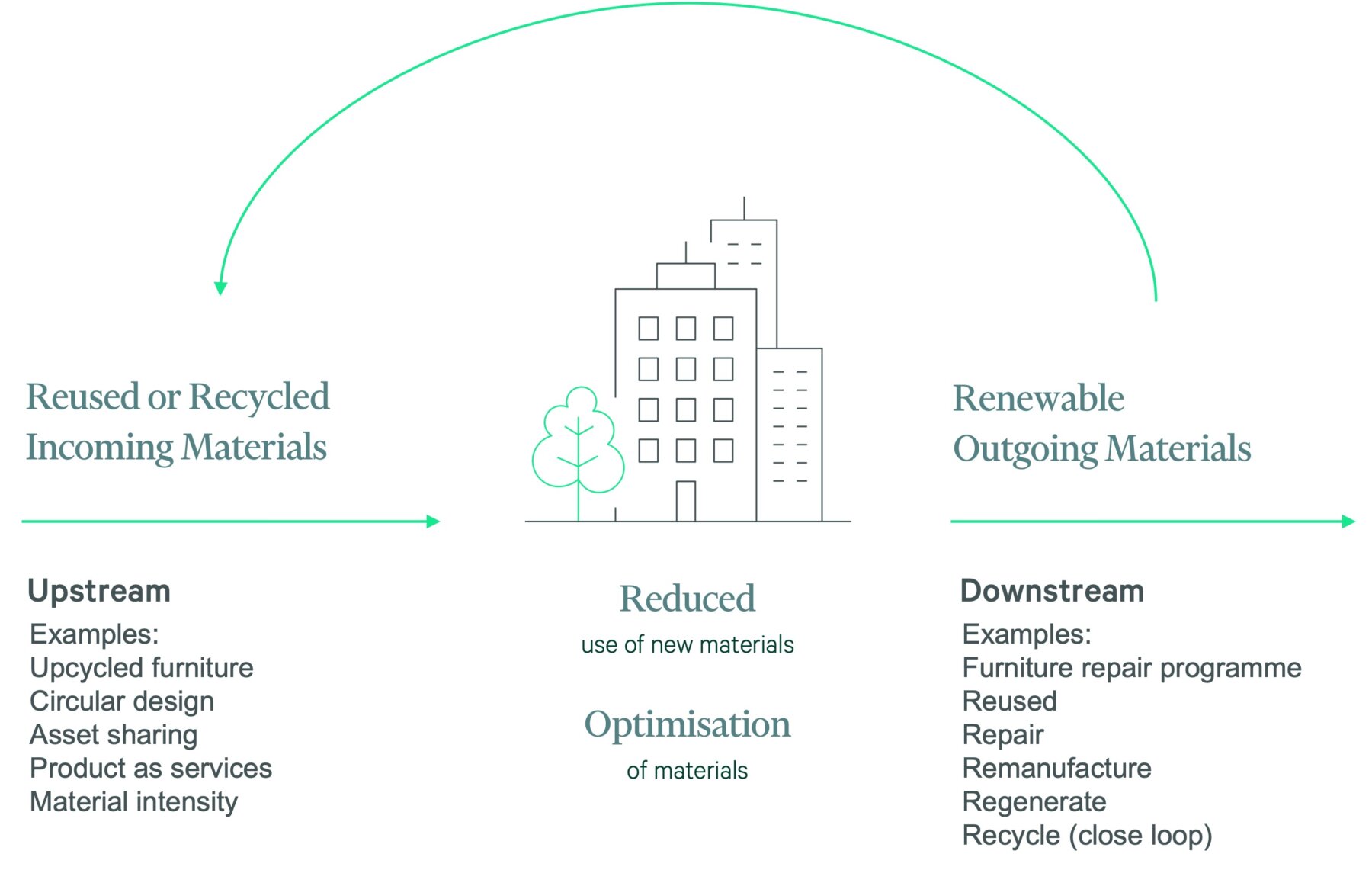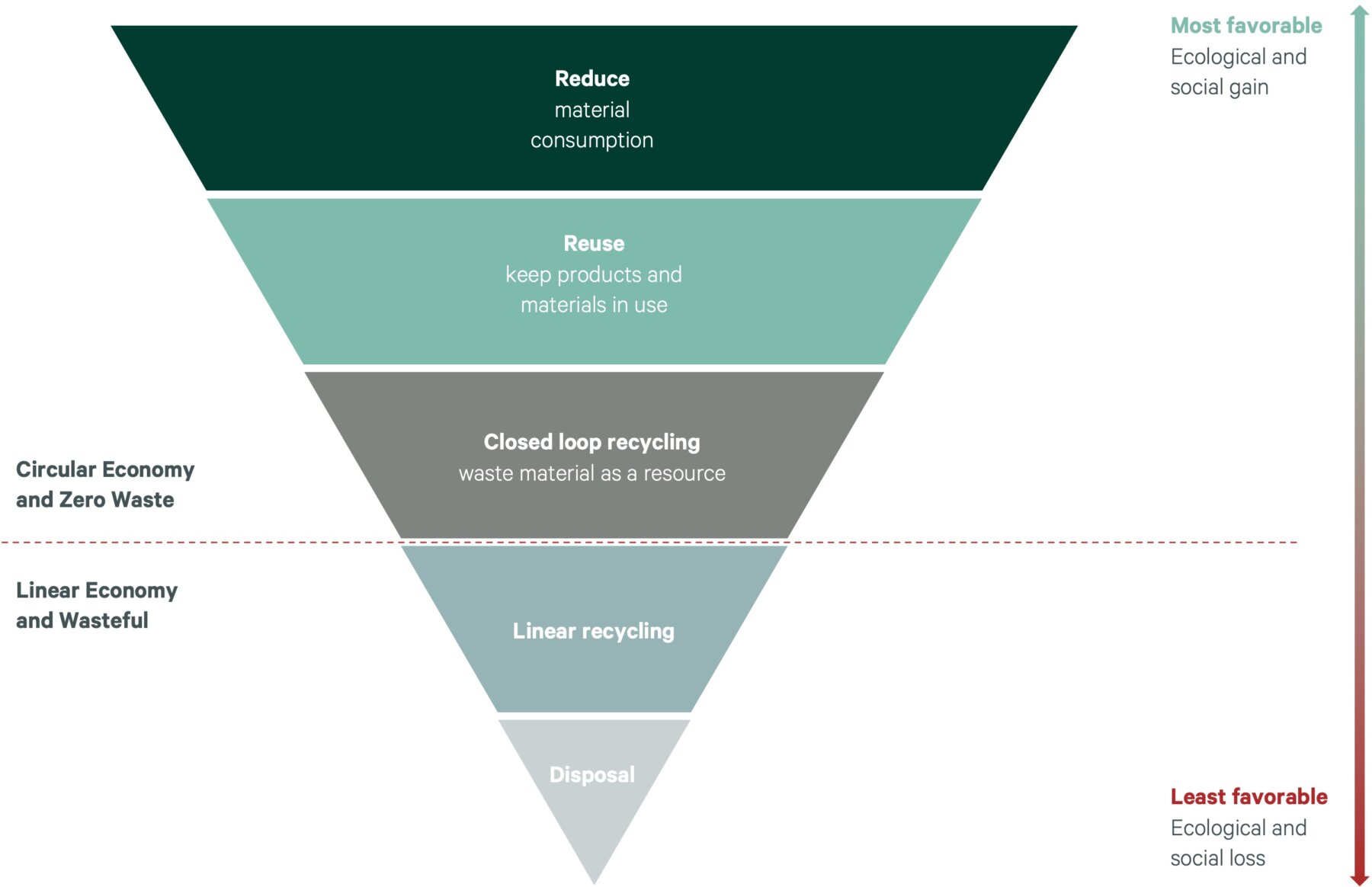Author: Helene Carpentier, Global Head of Circular Economy & Zero Waste, CBRE Global Workplace Solutions.
In our latest Thought Leadership article on World Green Building Council’s (WorldGBC) global #CircularityAccelerator programme, CBRE share their knowledge and reflections on the circular built environment.
A move to a circular economy in the built environment is vitally important. Curbing unnecessary material use in the built environment will help reduce GHG emissions that contribute to climate change. Recycling alone will not help companies meet net zero or other carbon reduction commitments. Taking steps towards zero waste and addressing Scope 3 emissions means moving material consumption from linear to circular.
The focus should be finding solutions upstream to create added value for businesses and communities rather than solutions to dispose of materials at the end of life. This requires connecting stakeholders through the lifecycle of a project and having a plan for what will happen at the building’s end of life.
A resource-intensive sector
The built environment produces a third of the world’s waste. Every year about 100 billion tonnes of raw materials are extracted for use across the buildings and construction sector (1). Annually, buildings are responsible for about 39% of energy-related global carbon emissions, one-quarter of which comes from embodied carbon or the emissions associated with the entire lifecycle of building materials and construction.
Extracting and transporting materials used in the built environment contributes to biodiversity loss and resource depletion. Moreover, a large amount of the extracted resources will become waste, exacerbating environmental impacts (2).
One area in the building sector where resource consumption and waste generation are a challenge is space fit-outs, which are responsible for a third of emissions over the life of a building. A fit-out is a process whereby interior building materials and components are installed, including flooring, wall and window coverings, partitions, doors, furniture and equipment. On average, fit-outs happen every eight years (3). Before each fit-out, interior spaces are stripped of their components, with most products are considered waste.
By adopting a circular approach to building fit-outs, we can eliminate waste across the value chain and limit the negative impacts associated with the over-consumption of materials.
Circular building fit-outs: The opportunity

There are three principles to a circular economy: design out waste and pollution, keep products in use for as long as possible and regenerate natural systems.
Considering these principles, the built environment can reduce waste and embodied carbon while creating jobs and new capabilities locally through promoting repair, reuse, remanufacturing and closed-loop recycling.
Reuse creates over 200 times as many jobs as landfills and incinerators.
The built environment can solve its waste issue with a circular economy design lens and connected procurement strategy. This means breaking down the silos between the stakeholders involved in fit-outs and strip-outs: designing spaces with a waste reduction mindset and working with material suppliers to close the loop on end-of-life materials so fewer materials will need to be used. During strip-outs, end-of-life materials can return to the supply chain as second-hand components, salvaged materials or recycled as feedstock for new products.
This is a prime opportunity for the building and construction industries to create jobs. Studies show that a circular economy could create as many as 45 million new jobs in the waste management sector (4). Repair jobs create 200 times more jobs than landfills and incineration and recycling create 50 times more jobs (5).

Below are some examples of where these strategies are already in use at CBRE:
For example, there have been several companies leading the exploration of circular business models to support more sustainable building fit-outs, such as Steelcase offering used office furniture management solutions (6), HermanMiller keeping materials in use with the rePurpose programme for furniture (7) and Saint Gobain taking back glass for closed-loop recycling (8). In 2021, CBRE saved nearly 315,000 pounds of emissions by using recycled content to furnish our offices. Additionally, innovative organisations such as Globechain or Rheaply are enabling material marketplaces, and ByFusion is compressing single-use plastics from buildings to use as building blocks.
Yet as a whole, the building sector has not yet adopted a circular approach that goes beyond recycling, as it requires the collaboration of multiple stakeholders within the value chain from upstream to downstream with a focus on eliminating waste at the different stages of the fit out: design, material procurement, end of life and renewal.
The Zero Waste Hierarchy
Recycling has its place in the circular economy. Still, the waste hierarchy and how the building sector applies it must be rethought to establish when recycling becomes part of a circular economy.
As described in the EU Waste Framework Directive (9) in 1975, the waste hierarchy ranks waste management options according to what is right for the environment. After prevention, it asks us to prioritise reuse and recycle over recovery and disposal. Today, many organisations globally have adopted the waste hierarchy, keeping the same purpose of diverting waste from landfills.
The building and construction sector broadly promotes the role of recycling and diversion from landfill. A focus on recycling can be managed in isolation from an overall project — it can be costed separately and tracked easily. Additionally, obtaining data on recycling from the waste stakeholders is simpler than engaging with a wide range of upstream stakeholders involved in reducing and reusing materials. Unfortunately, this approach is at the expense of equally, if not more, critical principles of reduce and reuse, even though solutions exist. There needs to be a mindset change.
At CBRE, our zero waste hierarchy takes an upstream approach to solving the waste issue while maximising positive environmental and social impacts. It considers the wider systemic benefits that a circular economy approach can have on the environment and local communities by reducing material extraction, keeping materials in use and creating jobs in local communities to reuse, repurpose and refurbish materials.

Zero waste will need to be accompanied by data to measure the impact of reduce and reuse and accelerate the transition to a circular economy for space fit-outs. Measuring a fit-out’s carbon emissions, material use, job creation, cost savings and other data points will support organisations within the sector to take informed actions.
Going zero waste to tackle emissions linked to building fit-outs
It’s also important not to ignore the value of embodied carbon as companies look to reduce the amount of indirect greenhouse gas (GHG) emissions linked to the purchase of products and services. That’s why addressing the built environment as a whole — and not just looking at direct emissions from buildings — is critical.
Due to the high turnover of material use in building fit-outs throughout the life of a building, collaboration from the various stakeholders across the value chain of a fit-out project will enable the maximum impact for the sector. Going zero waste — from linear to circular recycling — during design, procurement and strip-out will support the reduction of emissions associated with waste and material use. This will not only decrease the negative environmental impacts from the built environment, but it will also benefit businesses and local communities.
CBRE’s Decarbonisation Guide helps customers with decarbonising their real estate portfolios across Scopes 1, 2 and 3.
References